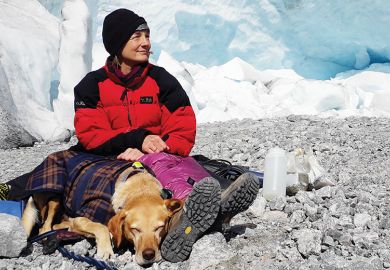One of the little games one can play with word-processing software is to try to guess which proper names will be recognised by the spellchecker and which will attract the little red squiggle that denotes a suspect word. In my work, I frequently type the phrase "Gutenberg-Richter", and it intrigues me that despite the fame of the Strasbourg printer, "Gutenberg" gets the squiggle (or used to - the latest version of Microsoft Office has caught up) while "Richter" goes unadorned. And I have no doubt that what gains "Richter" recognition is not, say, Hans Richter the great conductor, but Charles Richter the seismologist.
The phrase "Richter scale" has passed into everyday English, and one can read in a newspaper of something being described as "eight on the Richter scale" in anything from political leader items to the fashion pages.
The irony is that the one thing most people think they know about earthquakes is not even correct. "Richter scale" is journalese; no seismologist would ever use the phrase to another seismologist.
Unfortunately, the public demands to hear the magic words, and so the seismologist is driven, in the interests of communication, to suppress the urge to use technically correct language. What one should say is "magnitude". The original dimensionless scale that Richter invented in 1935 is properly called the local magnitude scale, and it has been largely supplanted now by different measures.
But if everyone knows (or thinks they know) Richter the scale, who was Richter the man? This is the subject of this biography by Susan Hough. Seismologists are not the people one expects to find as subjects of book-length biographies, so it may be a surprise to learn that Richter is actually the third seismologist to be so honoured in English. (The others are the Irishman Robert Mallet and the Englishman John Milne.)
The problem, of course, is that scientists do not always lead very interesting lives. A steady routine of lab work with the occasional conference trip is not very thrilling. In Richter's case, he did not even travel to very many conferences. Furthermore, to be frank, he was very much a nerd avant la lettre . Socially gauche, physically unprepossessing, with spectacles and sticky-up hair, he was even (amazingly for someone born in 1900) a dedicated Trekkie.
But what is particularly unusual in Richter's case is that he meticulously preserved all his papers, personal as well as professional, in the archives of the California Institute of Technology. This gives Hough the chance to really get inside her subject and present, as she puts it, "the measure of a man". A top-ranking scientist who is also a science-fiction fan, a poet and a nudist - what makes such an individual tick?
Nevertheless, his career was in essence a life of lab work, and a purely chronological approach to writing his life is not going to work. Hough sensibly arranges her book by themes, with chapters about Richter's sister, his early career (he did not set out to be a seismologist), his wife, the earthquakes he experienced and so on. The one drawback to this is that the phrase "as we shall see in a later chapter" crops up rather often.
But this is a well-written and readable book that gains a lot from the fact that the author is herself a leading seismologist and understands Richter's work from the inside.
The key question is, of course, does Richter merit a biography? He may be the only seismologist whose name is a household word, but he was not the greatest seismologist of all time, or even the greatest in the lab where he worked. That honour belongs to Beno Gutenberg, as Hough concedes. Indeed, one gets the impression that she is sometimes labouring under an obligation to talk up Richter's contribution.
Even the earthquake magnitude scale was something that Richter and Gutenberg worked on together. The difference was that Richter talked to the press and Gutenberg did not. So when Richter told the reporters that an earthquake was magnitude 5.5, they added in their copy "on Dr Richter's scale". Hough reproduces a letter from Perry Byerly, written 30 years after the fact, in which he claims that it was he who encouraged the press to use the phrase "Richter scale", but I am not sure if I believe this.
But Richter was clearly a more colourful figure than Gutenberg. And one thing this book, written by one professional scientist about another, communicates very clearly, is what it is actually like to be a scientist - a welcome contribution.
Roger M. W. Musson is head of seismic hazard, British Geological Survey.
Richter's Scale: Measure of an Earthquake, Measure of a Man
Author - Susan Elizabeth Hough
Publisher - Princeton University Press
Pages - 336
Price - £17.95
ISBN - 0 691 12807 3
Register to continue
Why register?
- Registration is free and only takes a moment
- Once registered, you can read 3 articles a month
- Sign up for our newsletter
Subscribe
Or subscribe for unlimited access to:
- Unlimited access to news, views, insights & reviews
- Digital editions
- Digital access to THE’s university and college rankings analysis
Already registered or a current subscriber?



